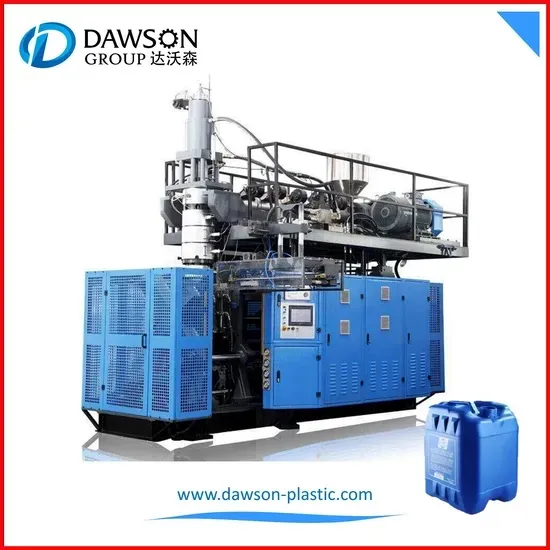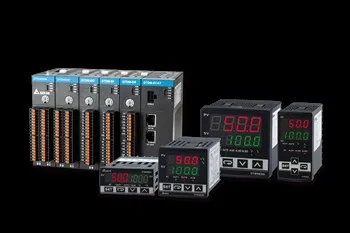Future Trends in Hollow Blow Molding Machine Design
The hollow blow molding industry is undergoing a significant transformation driven by technological advancements, sustainability requirements, and evolving market demands. As manufacturers seek greater efficiency, flexibility, and environmental responsibility, machine designers are responding with innovative solutions that redefine production capabilities. This article explores the key trends shaping the future of hollow blow molding machine design.
1. Advanced Automation and Industry 4.0 Integration
The integration of Industry 4.0 principles is revolutionizing hollow blow molding operations. Modern machines are becoming increasingly intelligent, with embedded sensors and IoT connectivity enabling real-time monitoring and data analysis. These smart systems can predict maintenance needs, optimize production parameters automatically, and minimize downtime through predictive analytics.

Automation extends beyond basic operation to include sophisticated quality control systems. Vision inspection systems integrated directly into the production line can detect defects in real-time, while automated material handling and part removal systems reduce labor requirements and improve consistency.
1.1 Artificial Intelligence in Process Optimization
AI algorithms are being deployed to analyze production data and identify optimal processing conditions. Machine learning models can adjust parameters such as temperature, pressure, and cycle times based on material variations, ambient conditions, and desired product characteristics. This results in improved quality consistency and reduced material waste.
2. Sustainable Manufacturing Solutions
Sustainability has become a central focus in blow molding machine design, driven by regulatory pressures and consumer demand for environmentally responsible products. Future machines will incorporate numerous features aimed at reducing environmental impact throughout the product lifecycle.
| Sustainability Feature | Implementation | Environmental Benefit |
|---|---|---|
| Energy Recovery Systems | Capture and reuse of process heat | Reduced energy consumption by 15-25% |
| Electric Drive Systems | Replacement of hydraulic with electric actuators | Lower energy use and elimination of hydraulic oil |
| Recycled Material Compatibility | Enhanced processing capabilities for PCR materials | Reduced virgin plastic consumption |
| Lightweighting Optimization | Precision control for minimal material usage | Reduced material consumption and transportation emissions |

2.1 Circular Economy Integration
Future blow molding machines will be designed with circular economy principles in mind, featuring integrated systems for processing post-consumer recycled materials without compromising product quality. Advanced filtration and material preparation systems will enable higher percentages of recycled content in finished products.
3. Enhanced Flexibility and Quick Changeover
Market demands for product variety and shorter production runs are driving the need for more flexible blow molding equipment. Future machines will feature modular designs that allow rapid reconfiguration for different container sizes, shapes, and materials.
Advanced quick-change systems will reduce mold changeover times from hours to minutes, enabling manufacturers to respond quickly to changing market demands. Digital twin technology will allow virtual commissioning of new configurations, further reducing setup time and eliminating trial-and-error adjustments.
3.1 Multi-Layer and Multi-Material Capabilities
The ability to process multiple materials simultaneously will become standard in advanced blow molding machines. Co-extrusion systems capable of handling 6 or more layers will enable production of sophisticated packaging solutions with barrier properties, recycled content, and specialized functional layers.

4. Digitalization and Virtual Commissioning
The digital transformation of blow molding extends beyond production to include the entire equipment lifecycle. Virtual commissioning using digital twins allows manufacturers to simulate and optimize production processes before physical implementation, reducing commissioning time and minimizing startup issues.
| Digital Technology | Application in Blow Molding | Benefits |
|---|---|---|
| Digital Twins | Virtual machine modeling and process simulation | Reduced commissioning time, optimized parameters |
| Augmented Reality | Maintenance guidance and remote assistance | Faster troubleshooting, reduced downtime |
| Cloud Analytics | Performance benchmarking across multiple facilities | Identification of best practices and improvement opportunities |
| Blockchain | Material traceability and sustainability verification | Transparent supply chain, compliance documentation |
5. Advanced Materials Processing
As new polymer technologies emerge, blow molding machines must adapt to process increasingly sophisticated materials. Future machines will feature enhanced temperature control systems, specialized screw designs, and advanced parison programming capabilities to handle engineering plastics, bio-based polymers, and high-performance barrier materials.

5.1 Bio-based and Biodegradable Material Compatibility
With growing interest in renewable and compostable packaging, blow molding machines will be optimized for processing PLA, PHA, and other bio-based polymers. These materials often require precise temperature control and modified screw designs to achieve optimal processing characteristics.
6. Human-Machine Interface Evolution
The operator experience is becoming a critical differentiator in blow molding machine design. Future interfaces will feature intuitive touchscreen controls, augmented reality guidance systems, and contextual help features that reduce training requirements and minimize operator error.
Remote monitoring and control capabilities will enable centralized management of distributed manufacturing operations, while predictive maintenance alerts will empower operators to address potential issues before they cause production interruptions.
Conclusion
The future of hollow blow molding machine design is characterized by intelligence, sustainability, and flexibility. As these trends converge, manufacturers will benefit from equipment that is not only more productive but also more adaptable to changing market conditions and environmental requirements. The successful implementation of these advancements will require close collaboration between machine builders, material suppliers, and end-users to fully realize the potential of next-generation blow molding technology.

